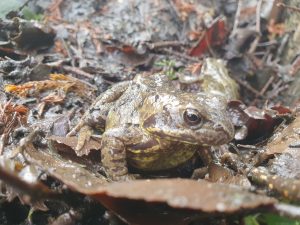How to build a Wildlife Pond
Adding a wildlife pond to your garden can be a great center piece. More importantly its almost guaranteed to bring new arrivals to your garden such as birds, small mammals, amphibians, invertebrates and sometime reptiles!
Ponds are a sanctuary for many animals, big or small, once its built they will come. The sound of water often attracts them, it can be very relaxing, adds a spot of beauty and conservation at the same time.
What size should I build a Wildlife Pond?
The great thing with wildlife ponds is that there is no certain size it has to be. They can range from small puddle like sizes to large open pond. A wildlife pond is better if it’s dug down at ground level so its more accessible for birds and small mammals. Safety is always important, try not to make it too large if you have youngsters about.
If you have the space, a 6ft x 4ft size is ideal, its not too large but is large enough to create a beautiful feature that encourages wildlife to enter. 30cm deep is ideal but if your planning on putting in goldfish, 60cm would be better. Try to have at least one side of the pond slopped so it creates a perfect area for wildlife to enter and safely get out. If you have spare liner from your install, be sure to use this extra on this area of the pond.
Getting started with building your Wildlife Pond
Firstly, you need to decide what shape you would like the pond to be. Most people do these a traditional kidney shape. Simply mark this out on the floor with sand or builders marking spray. Dig out the shape you have chosen and make sure you add some shelves, if the pond is small, you can use a spade to dig this. Shelves are great to house different types of amphibians of creatures, they also offer a great location to place your plants on as most marginal plants don’t like to be placed no deeper than 10/15cm under water.

Pond liner, preformed plastic or fiberglass pond?
This really comes down to budget. A pond liner would be the cheapest option, but they are more susceptible to puncturing, especially if you have larger wildlife like dear. The pros with a liner is that you can get the shape of the pond exactly how you would like it. The preformed ponds are more expensive and there is almost no risk of them breaking. Instillation is also easy, and you would have nice curved edges with no nasty folds like you would with a liner.
Filling your new Wildlife Pond
Now you have your pond dug and new liner or preformed pond installed, it’s now time to fill it. You can use tap water from a hosepipe to do this, be sure to use a water conditioner such as tap safe to remove the harmful Chlorine and Chloramine from the tap water. It’s also advised to purchase a good quality water test kit as the water can still go bad even if its only for wildlife.
What plants should I add to a Wildlife Pond?
There are many plants to choose from and sometimes it can be quite confusing choosing them. Each plant has its own designated spot in a pond because of the planting depth it requires. We advise speaking with your local garden center on which to add. But as a quick guide always check the back of the plant label as it states how deep to plant it.
The main types are floating oxygenating plants, potted marginals and lilies. We recommend adding at least one of each of these types.
You can also add in some rockery but be careful placing them in a pond which has a pond liner as you can easily puncture a cheaper HDPE type liner. Try placing some spare pond underlay under the stone to help protect the liner.
Do I need a pond filter for a Wildlife Pond?
We at JJ Landscapes and Ponds always recommend filtering your pond whether it’s a wildlife pond, goldfish pond or Koi pond. If water isn’t being moved and filtered the water can become stagnant, smelly and not healthy for wildlife and fish.
There are many types of pond filters to use, but what is the best for your pond? You will need to look at the product description as this will tell you what size wildlife pond it will filter. Pressure pond filters are usually the best as they can easily be hidden out of the way so nothing is on show, but some people use the all in one type filters. These filters are ideal as nothing is external from the pond, but the only downside is maintaining them, The filter has to be removed manually from the pond disturbing the wildlife. This is why we recommend pressure filters.
Wanting the professionals to do the hard work?
JJ Landscapes and ponds offer all kinds of services. Our most popular services are maintaining ponds and building them. So, after reading this article if your still unsure about doing this yourself you can contact JJ Landscapes and Ponds for a free quotation on building the dream pond in your garden.


